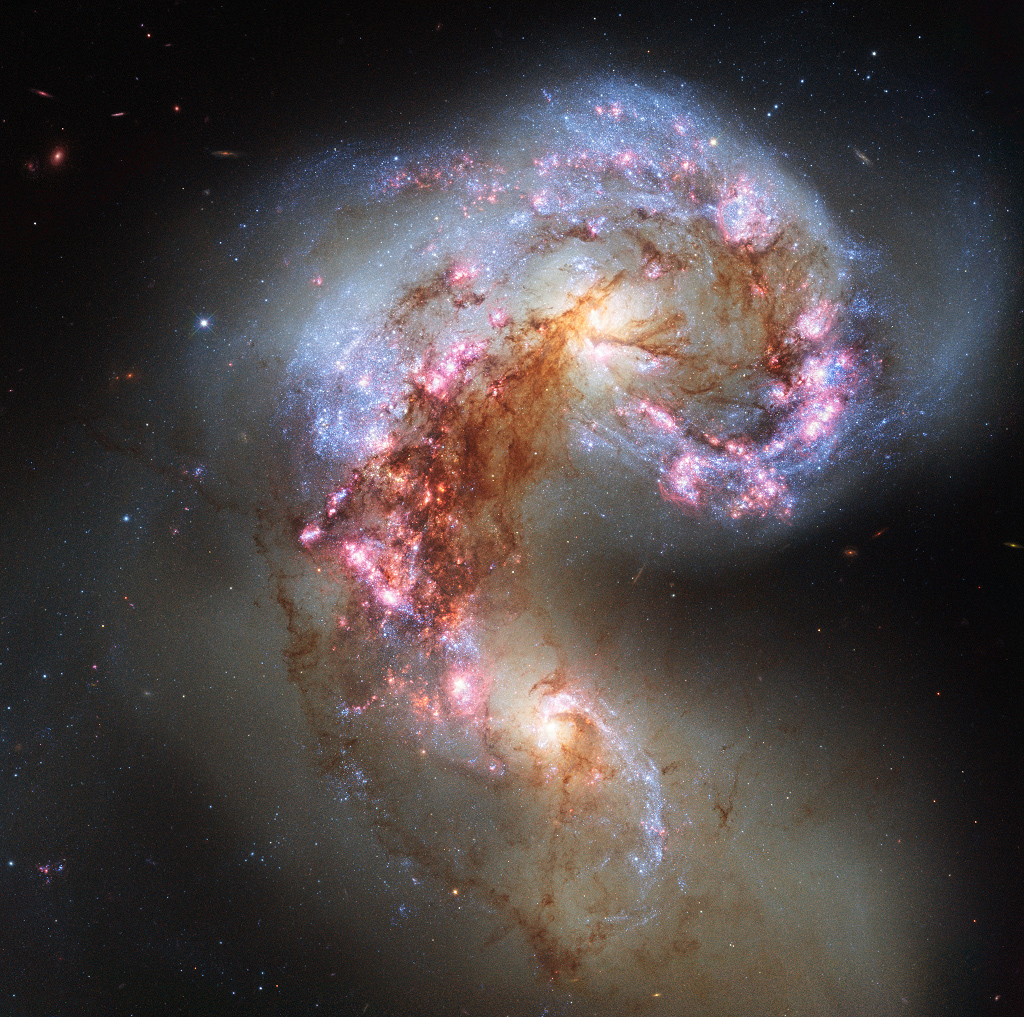Astronomy Picture of the Day
Discover the cosmos! Each day a different image or photograph of our fascinating universe is featured, along with a brief explanation written by a professional astronomer.
Image Credit: ESA/Hubble NASA
Explanation: Sixty million light-years away toward the southerly constellation Corvus, these two large galaxies are colliding. The cosmic train wreck captured in stunning detail in this Hubble Space Telescope snapshot takes hundreds of millions of years to play out. Cataloged as NGC 4038 and NGC 4039, the galaxies' individual stars don't often collide though. Their large clouds of molecular gas and dust do, triggering furious episodes of star formation near the center of the wreckage. New star clusters and interstellar matter are jumbled and flung far from the scene of the accident by gravitational forces. This Hubble close-up frame is about 50,000 light-years across at the estimated distance of the colliding galaxies. In wider-field views their suggestive visual appearance, with extended structures arcing for hundreds of thousands of light-years, gives the galaxy pair its popular name, The Antennae Galaxies.
Authors & editors: Robert Nemiroff (MTU) & Jerry Bonnell (UMCP)
NASA Official: Phillip Newman Specific rights apply.
NASA Web Privacy Policy and Important Notices
A service of: ASD at NASA / GSFC
& Michigan Tech. U.
This is an automated email. If you notice any problems, just send me a note at gtracy@gmail.com. You can add and remove email addresses to this distribution list here, https://apodemail.org.Unsubscribe

No comments:
Post a Comment